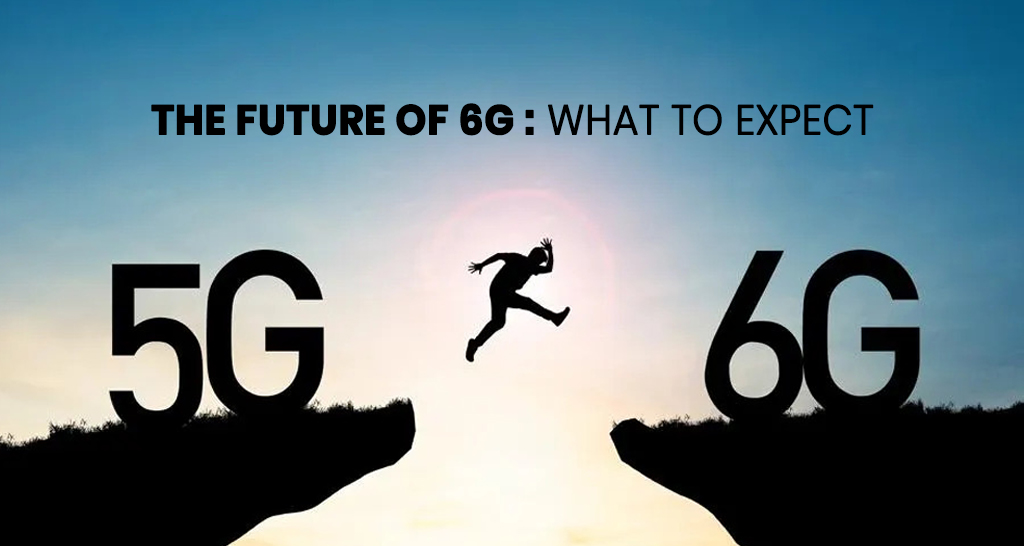As 5G networks continue to roll out globally, the tech community is already looking ahead to the next generation of wireless technology: 6G. Predicted to launch around 2030, 6G is expected to revolutionize how we interact with technology, enabling unprecedented connectivity, speed, and efficiency.
Here is what we can expect from the future of 6G:
Unprecedented Speed and Bandwidth
One of the most exciting features of 6G is its incredible speed. While 5G offers speeds up to 10 Gbps, 6G is expected to go much faster, potentially reaching 1 Tbps (terabits per second). This huge increase in speed will enable it to send and receive large amounts of data almost instantly, making real-time applications that are not possible now a reality.
Enhanced Connectivity
6G will offer widespread connectivity, smoothly combining networks on the ground and in the air. This means better connectivity not only in urban and rural areas but also reliable connections in remote and previously inaccessible locations. These locations include deep oceans and outer space. By working with satellite networks and high-altitude platforms, 6G will provide global coverage, supporting the Internet of Everything (IoE).
Ultra-Low Latency
While 5G reduced delay to about 1 millisecond, 6G aims to bring it down to microseconds. This ultra-low delay will be important for things that need instant feedback, like remote surgery, autonomous vehicles, and real-time interactive experiences in virtual and augmented reality.
Advanced AI Integration
Artificial Intelligence (AI) will be a big part of 6G networks, making them more intelligent and efficient. AI will manage and optimize network resources by predicting and adjusting to traffic patterns and user demands. This will enhance performance and reduce energy consumption, contributing to more sustainable network operations.
Holographic Communications
6G is expected to make holographic communication common, allowing realistic, 3D holographic images to be sent and shown in real time. This technology could transform teleconferencing, entertainment, and social interactions by providing a more immersive and interactive experience than ever before.
Advanced Security and Privacy
Security and privacy will be more important than ever, with better connectivity and faster data transmission. 6G will use advanced encryption methods and AI-driven security measures to detect and stop threats in real time. The network’s architecture will be designed to protect data and user privacy, addressing growing concerns around cyber threats.
Enhanced Sensing Capabilities
6G will extend beyond just traditional communication and include advanced sensing abilities. This will allow the network to collect detailed environmental data, supporting applications in smart cities, environmental monitoring, and autonomous systems. The ability to sense and understand the physical world in real time will create new opportunities for innovation.
Transformative Applications
6G will make many transformative applications possible in different industries:
- Healthcare: Remote surgery and telemedicine will reach new heights with ultra-reliable, low-latency connections.
- Transportation: Autonomous vehicles will benefit from real-time communication and data exchange, enhancing safety and efficiency.
- Manufacturing: Smart factories will leverage the IoE for optimized production processes and predictive maintenance.
- Entertainment: Augmented and virtual reality experiences will become more immersive and interactive, revolutionizing gaming, sports, and media.
Evolution of Wireless Technology
Wireless technology has evolved significantly since the introduction of 1G in the 1980s. Then came 2G, 3G, 4G, and now 5G, which has brought advancements in speed, connectivity, and capabilities. The 6G network will continue this evolution, offering the fastest speeds and most reliable connections yet.
Key Features of 6G
6G will enable faster data rates and the ability to handle larger downloads and uploads, significantly improving remote work positions. Devices such as laptops and smartphones will benefit from lower latency and the ability to communicate globally with enhanced reliability.
Applications of 6G
6G technology will advance industries worldwide, allowing quick communication and data processing. Healthcare, manufacturing, and entertainment industries will benefit from the improved speeds and connectivity.
Technological Innovations
6G will enhance AI and VR technology, supporting systems with terahertz frequencies for the fastest upload and download speeds. This will improve medical alerts, home security, and retail automation. The automotive industry will also see advancements in smart vehicles and public transportation systems.
Impact on the Internet of Things (IoT)
6G will enhance the compatibility of multiple devices across different networks, supporting smoother transitions and processing larger pieces of data. Industries like engineering and architecture will benefit from improved device communication and AI integration.
Global Connectivity and Accessibility
Implementing 6G could provide accessibility to remote and underserved areas, bridging the digital gap and supporting global connectivity with stronger signals and faster speeds.
Timeline and Challenges
6G networks are expected to start working around 2030, but some challenges remain. These include ensuring different devices are compatible, addressing industry technology upgrades, and addressing security concerns. Before people can use 6G, developers must perform essential tests and make 6G available to consumers.
The innovative technology surrounding 6G has the potential to reshape wireless communication. With lightning-fast speeds, the ability to handle larger pieces of data, and stronger signals, 6G can bring global connectivity to reality. It will simplify lives, automate tasks, and support remote work, making it easy to see why 6G has gained so much attention and popularity.

